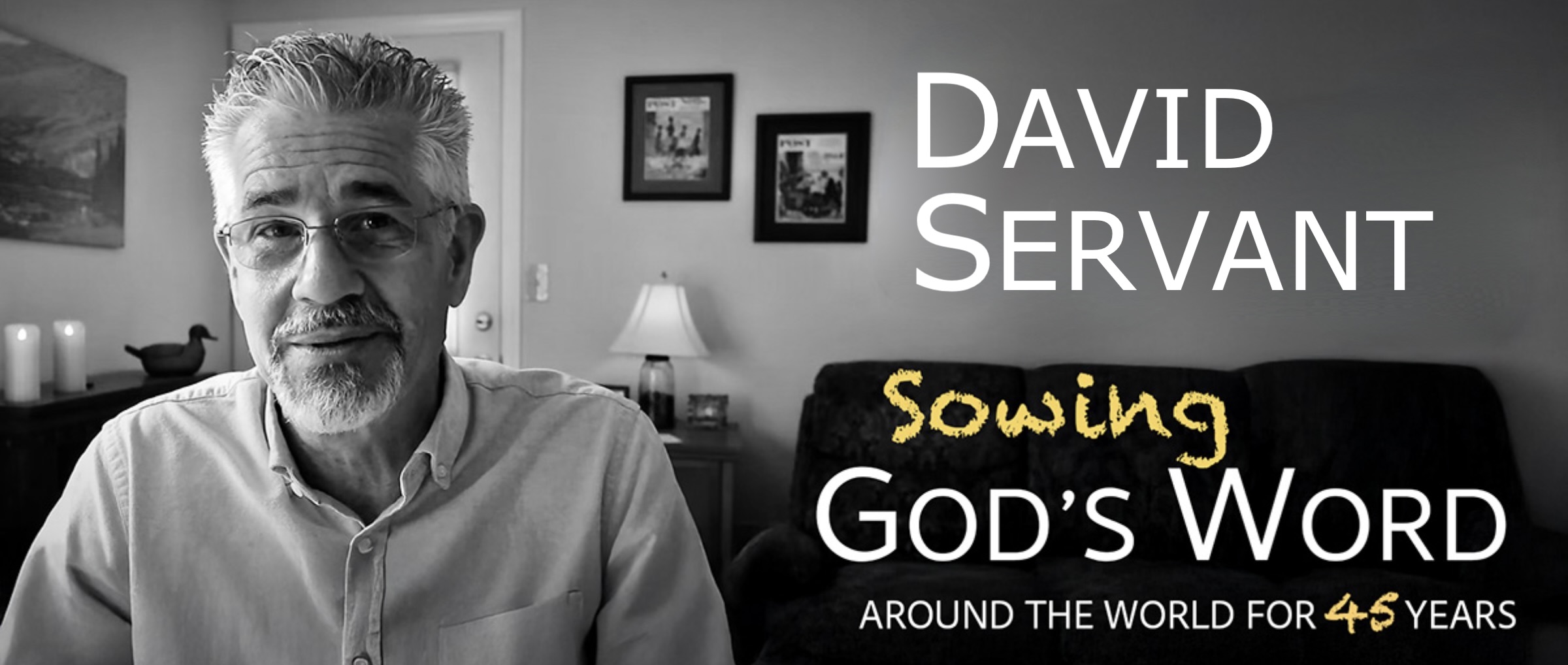Although it was now noon, the brightest time of day, we read that there was darkness until Jesus died at three o’clock. We are told very little in the Gospels of what happened during those three hours, but many think that was the time when God’s wrath fell upon Jesus in a way that is unimaginable to us. Near the end of that three-hour period Jesus cried out, “Eli, Eli, lema sabachthani?” which means, “My God, my God, why have you forsaken me?” (Matthew 27:46). This gives us some insight into Jesus’ emotional state. He felt utterly abandoned by the One with whom He had shared intimate fellowship from eternity past. To Jesus, it hurt more than the nails pounded through His wrists and feet. We must remember, however, that the Father had a reason for abandoning His Son. God forsook Jesus so He could accept us.
Some of those who were nearby heard Jesus’ cry, and mistakenly thought He was calling for Elijah. According to John’s Gospel, at about the same time Jesus also declared that He was thirsty, so one of the bystanders offered Him some sour wine in a sponge. The rest waited to see if Elijah would come and save Him.
After He drank from the sponge, Jesus said only two other sentences from the cross, probably one right after the other. The first was, “It is finished!” (John 19:30), a phrase that can also be translated, “It has been paid in full!” When Jesus died, the full price had been paid for the sins of humanity. Potentially, everyone could be forgiven.
The last thing Jesus said from the cross was, “Father, I entrust my spirit into your hands!” (Luke 23:46), after which His body immediately died and His spirit departed. But that was not all that happened. As Jesus cried out His final words and then expired, there was an earthquake and that split rocks in the immediate vicinity. Some tombs even opened, and the bodies of many holy people were resurrected. What they saw terrified the Roman soldiers standing guard, to the degree that they exclaimed, “Truly, this was the Son of God!” (Matthew 27:54). Jesus’ birth, life, and death were like no other. But the biggest surprise was yet to come in three days!
Q. Some teachers say that Jesus became a spiritual child of Satan on the cross, and, after He died, He went to hell to suffer for three days for our sins. From what we’ve read yesterday and today, how do we know those two things aren’t true?
A. We know that Jesus wasn’t a spiritual child of Satan, as unsaved people are, because He spoke to God as being His Father right before He died. We know that Jesus didn’t go to hell where unsaved people go when they die, because Jesus told the repentant thief that they would be together in paradise that very day.
Q. We read today that the veil in the Temple was torn in half, from top to bottom, just as Jesus died. What do you think that signified?
A. The Temple curtain that was torn divided the holy place from the holy of holies, which only the high priest could enter once a year, and only with great precaution. God’s holy presence remained there, and no human being could get near it without dying. When it was torn, it obviously signified that there was no longer a barrier between God and man, and that through Jesus’ substitutionary sacrifice, people now have access to a holy God.
![]() Application: Jesus’ crucifixion had been predicted by David in Psalm 22, written hundreds of years before Jesus was born. By inspiration of the Holy Spirit, David wrote, “My God, my God! Why have you forsaken me? … Everyone who sees me mocks me. They sneer and shake their heads, saying, Is this the one who relies on the Lord? Then let the Lord save him! If the Lord loves him so much, let the Lord rescue him’…. My life is poured out like water, and all my bones are out of joint. My heart is like wax, melting within me. My strength has dried up like sun-baked clay. My tongue sticks to the roof of my mouth…. My enemies surround me like a pack of dogs; an evil gang closes in on me. They have pierced my hands and feet…. They divide my clothes among themselves and throw dice for my garments” (Psalm 22:1,7-8,14-16,18). This is further proof that Jesus was the Messiah, and that it was God’s plan for Him to die on a cross.
Application: Jesus’ crucifixion had been predicted by David in Psalm 22, written hundreds of years before Jesus was born. By inspiration of the Holy Spirit, David wrote, “My God, my God! Why have you forsaken me? … Everyone who sees me mocks me. They sneer and shake their heads, saying, Is this the one who relies on the Lord? Then let the Lord save him! If the Lord loves him so much, let the Lord rescue him’…. My life is poured out like water, and all my bones are out of joint. My heart is like wax, melting within me. My strength has dried up like sun-baked clay. My tongue sticks to the roof of my mouth…. My enemies surround me like a pack of dogs; an evil gang closes in on me. They have pierced my hands and feet…. They divide my clothes among themselves and throw dice for my garments” (Psalm 22:1,7-8,14-16,18). This is further proof that Jesus was the Messiah, and that it was God’s plan for Him to die on a cross.



